In this post: Learn everything you need to know about worldschooling and homeschool travel, including one mom’s firsthand experience with this educational movement.
If you’re a homeschooling parent, you’re likely familiar with a wide array of educational styles. Classical, Montessori, Charlotte Mason, unschooling—you’re no stranger to these homeschool styles and may have even tried out more than one.
But one educational movement stands out as a truly unique approach to learning, and that’s worldschooling. It’s about as far from a traditional education as you can get, but offers plenty of valuable learning opportunities through real-life experience.
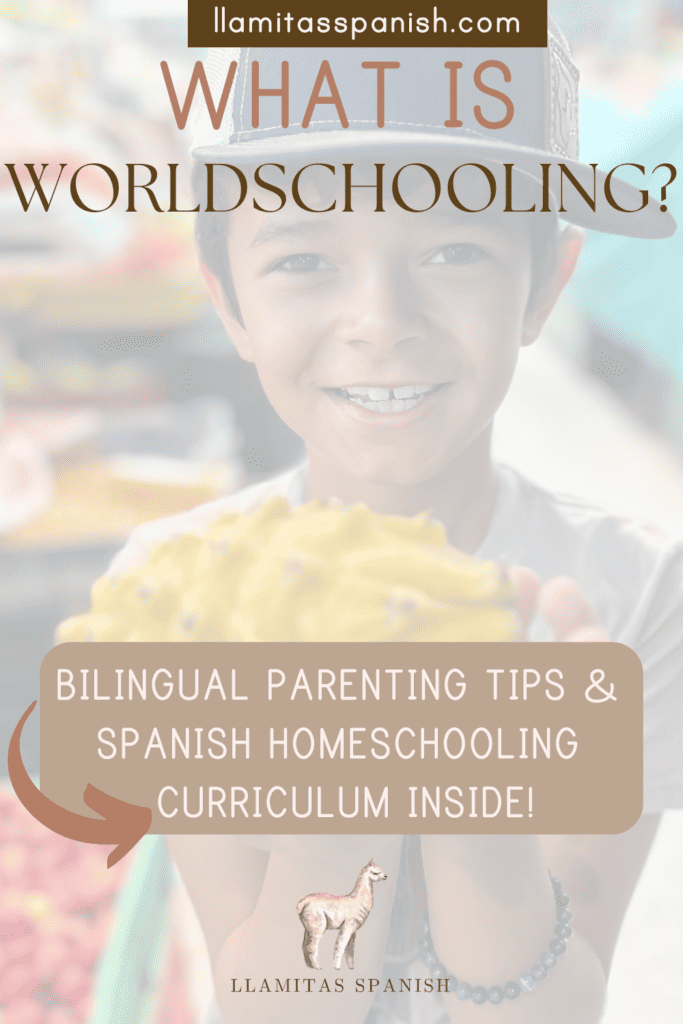
That’s because worldschoolers treat planet Earth as their classroom. Rather than learning from a textbook, worldschoolers learn through travel and exploration.
But what’s worldschooling actually like? We talked with an actual worldschooling mom to find out about her experience. Here’s everything you need to know about worldschooling so you can decide if it’s right for your family.
Table of Contents
What is Worldschooling?
Put simply, worldschooling is an educational movement that views our world as a classroom.
It’s a style of homeschooling that allows students to get out and explore the planet we live on, through travel, culture, and other hands-on experiences.
There’s so much to be learned from getting out into the world and engaging with it, and this belief is at the core of worldschooling.
You may have heard of worldschooling families who’ve sold their homes and now travel the country in an RV or live abroad, sometimes moving from one country to the next.
While this is certainly one way to go about worldschooling your kids, it’s important to note that it isn’t the only way. Like many homeschooling parents, worldschooling families often choose this route for its flexibility.
For example, worldschooling might involve:
- Traveling and learning new languages and cultures
- Actually living abroad
- Finding learning opportunities at museums, libraries, markets, organizations, and parks in your community
- Exploring and learning about nature
- Or all of the above!
Travel is an important part of worldschooling. And yes, for some families it’s essential. However, if traveling or living abroad is not an option for your family right now, you can still find ways to make planet Earth your classroom at home—while making plans for travel later.
There’s plenty to learn about in the world around you and likely a rich variety of people, languages, cultures, and beliefs right in your own community. As a worldschooling parent, your job is to seek out those opportunities.
Related post: Best Homeschool Spanish Curriculums
Do Worldschoolers Use a Curriculum?
Flexibility is a key component of worldschooling, and whether or not you choose to use a structured curriculum is up to you. There is no set worldschooling curriculum—rather, the goal of this form of education is to gain experiences and knowledge through traveling and interacting with the world.
This doesn’t mean you can’t have a curriculum, though. While your child’s schooling certainly won’t be traditional (and that’s the point!), it can still be structured. There are a few different ways that worldschoolers might do this, including creating your own curriculum, choosing a formal homeschool curriculum, or making use of online education programs.
Create your own curriculum.
Whether you’re traveling domestically or internationally, let your destinations guide learning.
For example, you might visit World Heritage Sites, temples, and museums. You can learn about the Maya civilization by visiting Chichén Itzá in Mexico. Maybe you’ll take pottery and ikebana classes in Japan or observe marine life by snorkeling in the Great Barrier Reef in Australia.

Okay, maybe we’re just getting into my own bucket list here, but you get the idea! With the world as your classroom, the learning opportunities are endless.
Worldschooling is inherently interdisciplinary, so creating your own curriculum shouldn’t be too challenging. Have your child keep a journal, read books, research, and learn important terms to accompany these experiences.
Additionally, taking advantage of volunteer opportunities or even enrolling your child in a nearby school if you’re living abroad are excellent options to enhance your child’s learning experience.
Use a homeschool curriculum.
If you want to start worldschooling but still want to be sure your child is gaining all of the skills they would with a traditional education, another option is to use a homeschool curriculum that you can bring along with you on your travels.
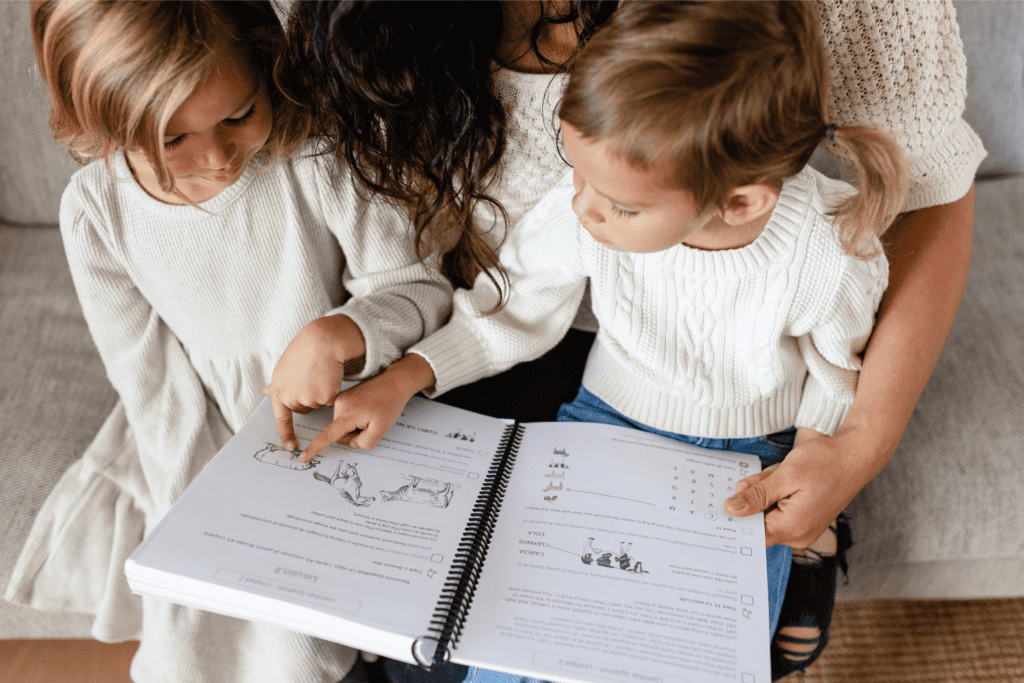
This will ensure that your child is keeping up and learning all of the finer points of math, science, and language arts that might not be as easy to teach through hands-on experiences. While this can be a convenient option, keep in mind that it involves bringing textbooks and other materials along as you travel.
If you’re planning to live abroad or travel to a certain region, it’s also a good idea to begin a language curriculum relevant to the location. There’s no better way to learn a language than being fully immersed in it, but having appropriate materials to support your learning is equally important.
Make use of online education.
Online schools can be another good option for worldschoolers. Again, this can help you to ensure your child is getting a well-rounded education while you’re on the road.
Look for options like Time4Learning or Kumon’s Virtual Classes that are flexible and allow your child to work at their own pace if you’ll be traveling frequently. Online learning materials are much more convenient when traveling as well, since you won’t be lugging textbooks around.
Related post: Elementary Homeschool Spanish Curriculum
What Are the Advantages and Disadvantages of Worldschooling?
Of course, worldschooling may not be the best fit for every family. While it’s easy to see how this kind of education will benefit your child, it comes with its own unique set of challenges.
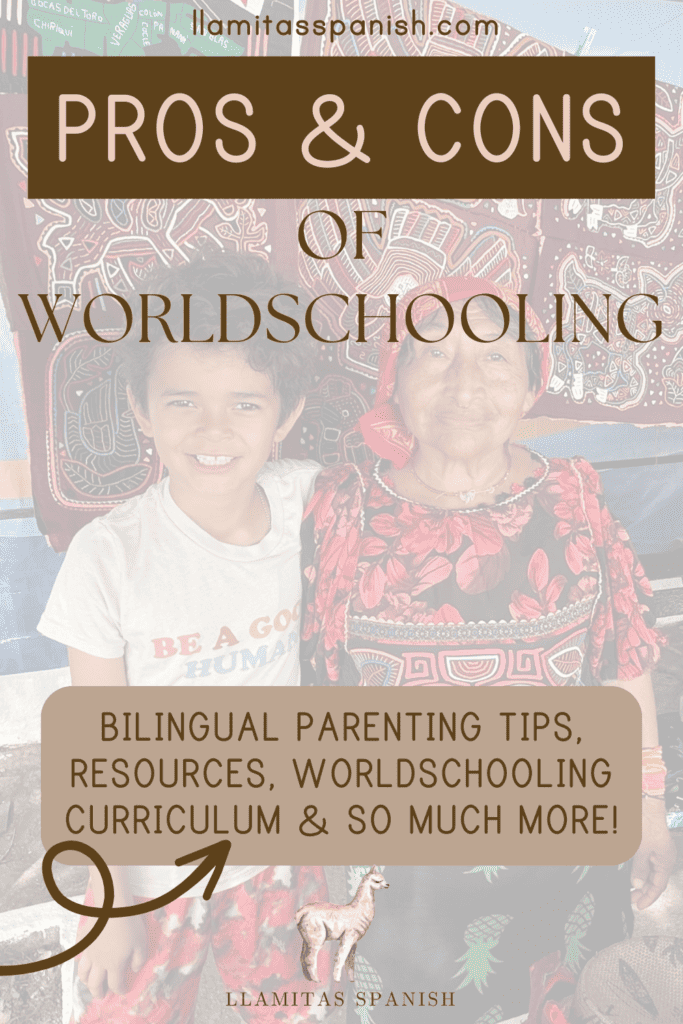
Let’s take a look at some of the advantages and disadvantages of worldschooling:
| Worldschooling Pros | Worldschooling Cons |
| Encourages a love of learning | Requires self-discipline |
| Exposure to languages and cultures | Less support from professional educators |
| Promotes empathy and tolerance | Lack of a structured schedule or routine |
| Foreign language immersion | Travel expenses |
| Hands-on learning | Lots of research and planning |
| Flexibility: The ability to set your own schedule | Dealing with culture shock and feelings of isolation |
| Endless learning opportunities | Parents must have flexibility at work for homeschool travel or living abroad |
| Spending more time together as a family | Difficulty maintaining friendships |
| Builds social skills and communication skills | Dealing with culture shock and feelings of isolation |
| Promotes physical activity and time outdoors |
Related post: 8 Must-Read Books for Homeschooling Moms
Q&A with a Worldschooling Mom
To learn more about what worldschooling is really like, we were able to interview an actual worldschooling mom, Melissa Gonzalez!
Melissa currently lives with her husband Alex and son Noah in Montana, but they previously lived in the Dominican Republic. Here’s what Melissa had to say about their time worldschooling in the Dominican Republic and Montana:
“Noah attended 1st grade at an international school on the beach. I knew then that Noah would never attend a ‘traditional’ school again. We love it here in Montana but miss the culture we experienced in DR. Noah spent his 2nd grade year at a Montessori school here. I volunteered there and enjoyed spending a lot of time in the beautiful outdoors with Noah and his classmates.”
So let’s dive deeper and learn more about Melissa’s firsthand worldschooling experience!
Please introduce your family!
Answer: Hello. My husband, 8 year old son, Noah and I have been traveling since 2020. We are currently living in NW Montana and consider this our home base. We are American.
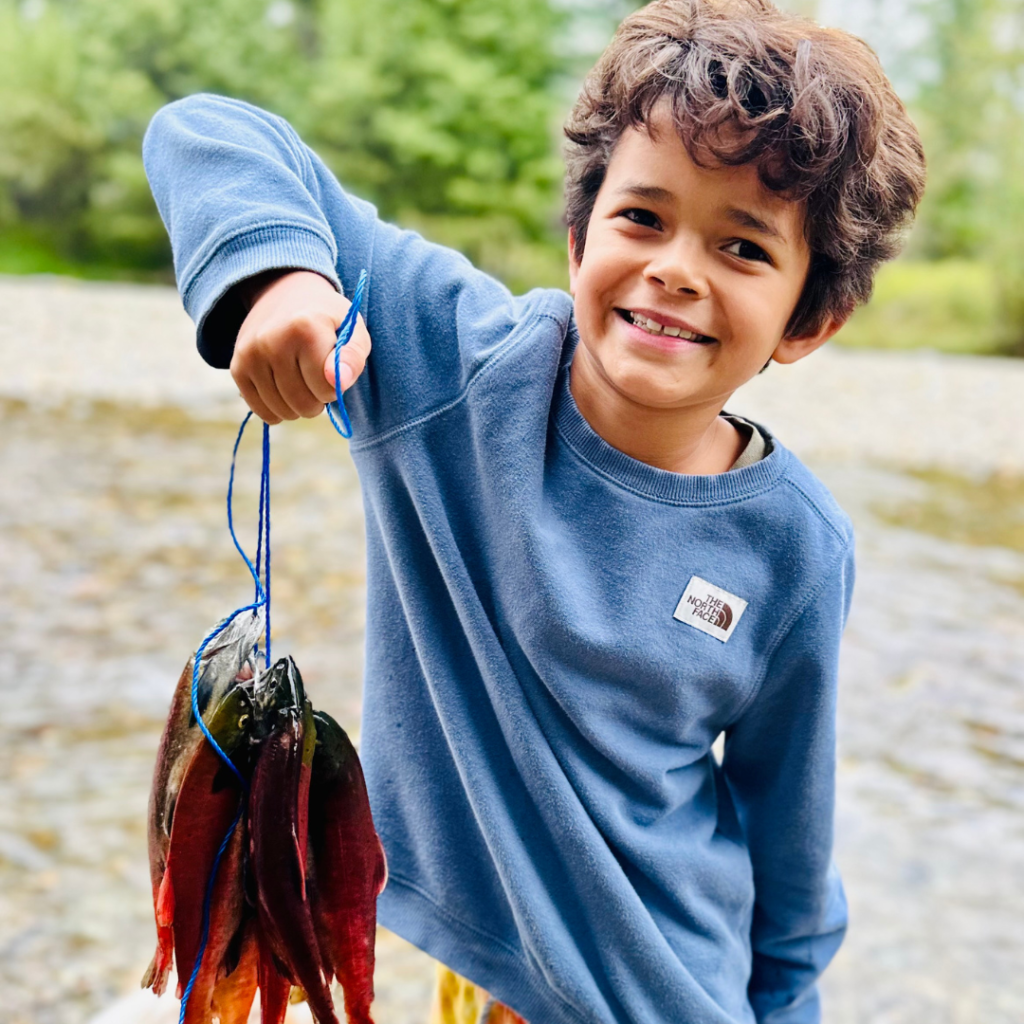
How long have you been worldschooling and what inspired you to pursue that?
Answer: In 2020 we sold our home/mini farm in Henderson, NV, bought an RV and hit the road. Several months before taking this giant leap of faith, my husband was working long hours at high stress job.
We had decided to take a road trip to the Grand Tetons, and on our way back to Nevada we stopped to visit our part time RV friends at their campsite in southern Utah. As we played by a beautiful river with our friends and their kids, we realized that it was time to make a change. Our final leg of the trip back to Henderson was about three hours. As we drove, we plotted our escape from the rat race of life.
Within three months my husband retired, our beautiful home was sold, our 5th was bought and we had set sale for a life unknown. It was scary and exciting all at the same time. We traveled the country until we settled in North Georgia for about 10 months. We hiked and explored through the SW United States.
It wasn’t too long until the travel bug bit us again. Our next stop was the north shore of the Samana peninsula in the Dominican Republic. From there we explored throughout Colombia, starting in Medellin and the coffee region.
Because of some medical issues, we headed back to the US and settled in gorgeous NW Montana. While in Montana we explored all throughout Canada and headed south to Colombia once again, visiting Bogota and several villages throughout the Andes. Hawaii has become a special place for us as well being that Noah’s first best buddy lives there now. We will be heading there in a few days and will be there for the month of October.
We do enjoy being a part of a community here in Montana. We feel like we get the best of both worlds. My husband coaches the high school basketball team here but once the season is over we will be hitting the road for several months…..destination currently unknown as of right now. 🙂
What does a typical week of worldschooling look like for your family?
Answer: While we are visiting another place in the world, whether it be a US state or another country, Noah has a three ring binder that he takes with him. In his binder he records his adventure, activities and things he has learned about: agriculture, local food, people he has met, culture, etc.
When we are home Noah enjoys the Llamitas curriculum with Dad most of the time, being that Dad speaks fluent Spanish. Noah’s grandpa was born in the Dominican Republic. We also do a lot of nature based learning in the forest. Noah participates in guitar and tennis twice a week as well.
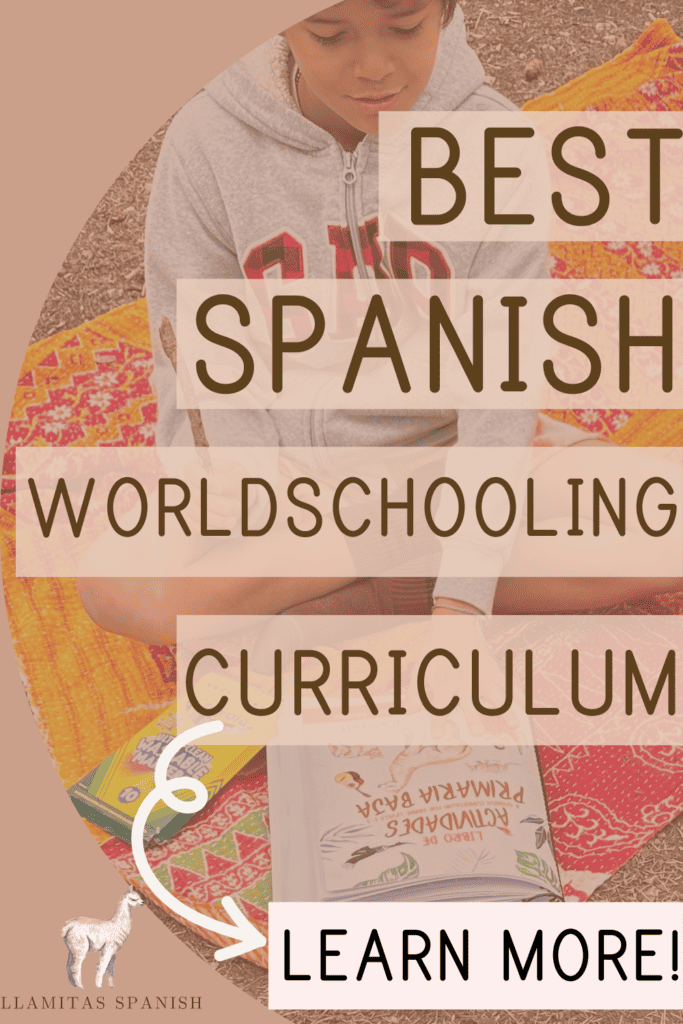
We have a huge homeschool community in our neck of the woods and enjoy meeting up for playdates. We love visiting the library, local museums, and other activities our city has available for homeschoolers.
What is your favorite element of worldschooling?
Answer: We love being able to learn and teach freely, all of which is done far away from fluorescent lights and desks.
You can connect with Melissa at Gonzalezmelissa09@gmail.com or Nomadic_Noah_and_co on Instagram.
Llamitas Spanish Curriculum
Whether you’re worldschooling, homeschooling, or traditionally schooling your child, you can give them an authentic and culturally rich learning experience with the right support.
Designed with young learners in mind, our Llamitas Spanish Curriculum goes beyond vocabulary learning and immerses students in language and culture with authentic lessons rooted in Spanish and Latin American music, art, history and stories!
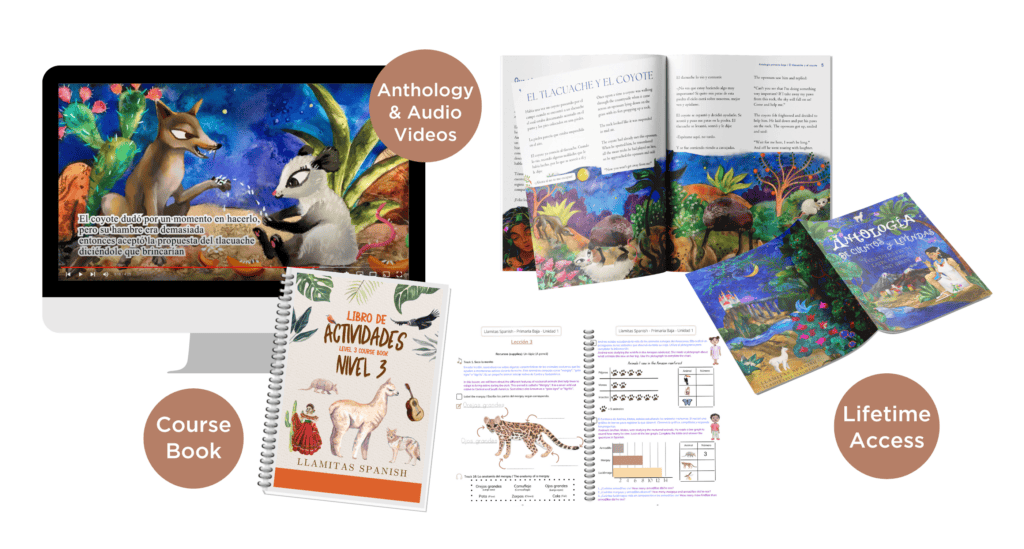
Students can expect to:
- Learn authentic Spanish nursery rhymes and songs
- Discover the history and culture of the Maya civilization
- Create their own colorful artwork inspired by Mexican folk art
- Study Antoni Gaudí’s famous architecture in Barcelona
- Explore life in the Atacama desert and the layers of the Amazon rainforest
- And so much more!
While we may not be able to physically take you to these places, our curricula will provide you with plenty of beautiful, culturally rich experiences.
Useful Worldschooling Resources
If you’ve made up your mind and are ready to embrace the worldschooling lifestyle, there are some fantastic resources to help you get started. Here are a few of our favorites that we’ve come across:
- World Travel Family: This homeschool travel blog has loads of helpful information and resources on worldschooling, homeschooling, traveling with kids, travel gear, destinations, and more. It’s a go-to resource for worldschooling families!
- Worldschool Pop-up Hub: Looking to connect with other worldschoolers? This site organizes week-long pop-ups for worldschoolers to meet and connect all over the world.
- Worldschooling Central: From their worldschooling quick-start guide to their community of worldschoolers, this site is great for families just getting started on their journey.
- We Are Worldschoolers: With opportunities to connect with other worldschoolers online and in-person as well as comprehensive resources for planning to live and learn abroad, this community is an excellent resource.
